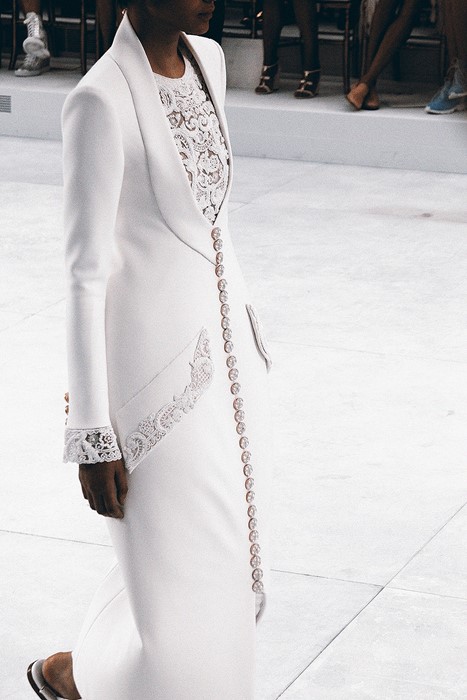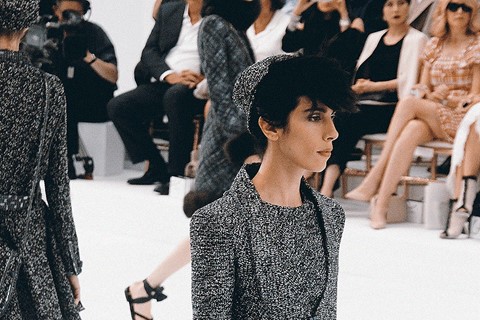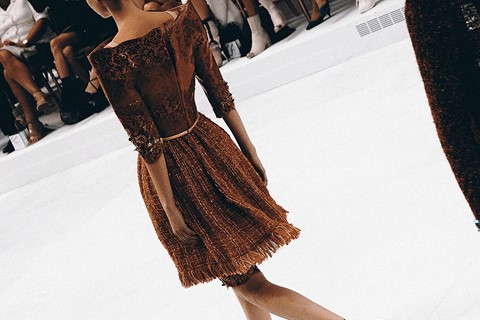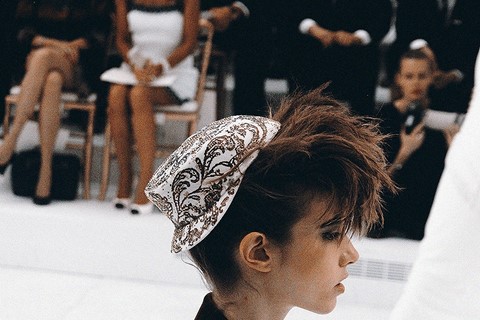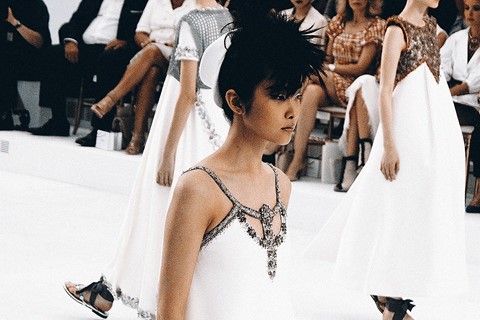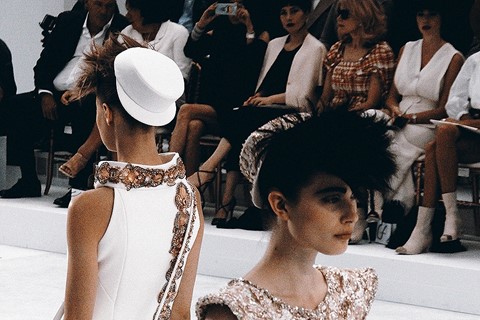Following on from the A/W14 couture show, AnOther break down the five codes of Chanel Couture
Iceberg-importing, mirage-creating, supermarket-fabricating Karl Lagerfeld amazed guests at the Chanel couture show, when they entered the Grand Palais to discover a surprisingly minimal décor and a collection of pared-down, ultra modern looks. Backstage after the show, the designer admitted to having been inspired by the pictures of Le Corbusier’s apartment in Paris, a space he had been reflecting on for quite some time, although, he said, he had never before found the time to develop the idea. Here are five ways in which Le Corbusier’s brutalist architecture and revolutionary ideas influenced the latest Chanel Couture show.
1. The setting
A scaled-down space and a pristine, white setting decorated only by digital fireplaces situated at either end of the catwalk (modeled after the ones Le Corbusier had in his Champs-Elysées terrace) were a startling change from the crammed shelves of March’s herculean Chanel Shopping Center show. The only extravagant licence was an antique baroque mirror above a mantel. More a functional reflection on the way history and modernity intertwine in fashion than a mere ornament. [See a timeline of shows at the Grand Palais here]
2. The concrete
In 1915 (the year in which Coco Chanel opened her first 'maison de couture' in Biarritz), Le Corbusier designed Dom-ino House, a prototype for mass housing inspired by classic proportions and sustained by reinforced concrete columns. Subsequently, concrete would become a staple of contemporary architecture. Karl Lagerfeld was reflecting on all that when he decided to make concrete the foundation of his collection. Cut into minuscule tiles sewn into tweed, they turned out to make a beautiful mosaic.

3. The flat shoes
Karl Lagerfeld is bored with long red carpet dresses and towering heels. Instead, he chose to build his silhouette on cycling shorts and above-the-knee skirts, worn with luxury flip flops in embroidered leather and grosgrain bows tied around the ankles. "I like the ease of a flat," said Karl, "the models can walk in those dresses like they’re nothing."
4. The 'coutureless' couture
The French word 'couture' means cutting and seaming, but, as Karl Lagerfeld cheekily said backstage, "this is haute couture without the couture." Rather than seamed and sewn, the garments were molded. Neoprene was given the same treatment as chiffon or tweed and embroidered with clear plastic flowers… The perfect way to bring couture into the new century.
5. The pregnant bride
This time, Karl’s bride (the show’s final look) was seven months pregnant : a provocative move away from the weigh of tradition and the values historically associated with couture. "I like pregnant women", he said, looking at Australian model Ashleigh Good, who was dressed in a stunning oval-shaped, chalk white dress complete with a cape embroidered in golden pearls. "She looks so elegant, so noble."
Text by Marta Represa
